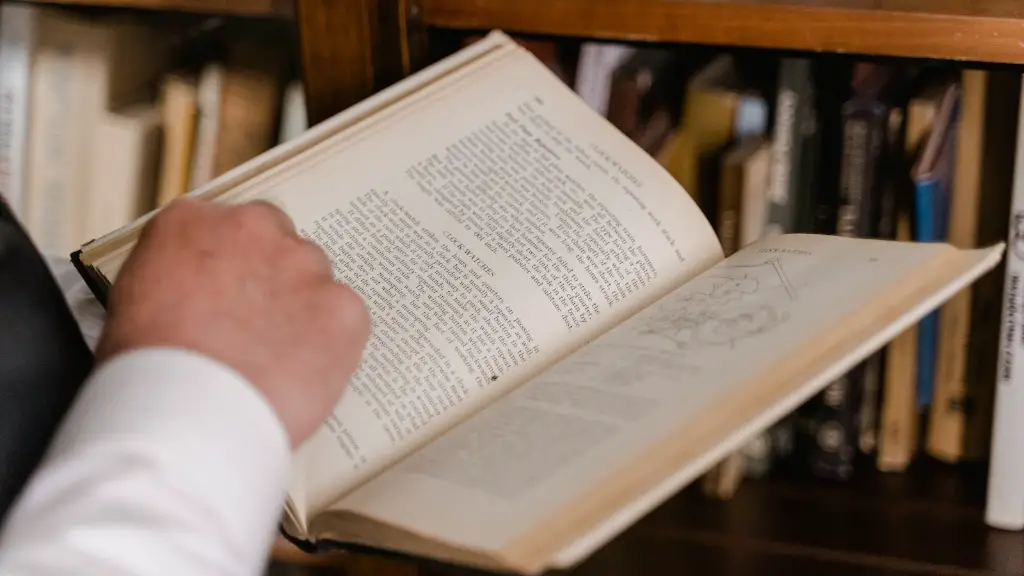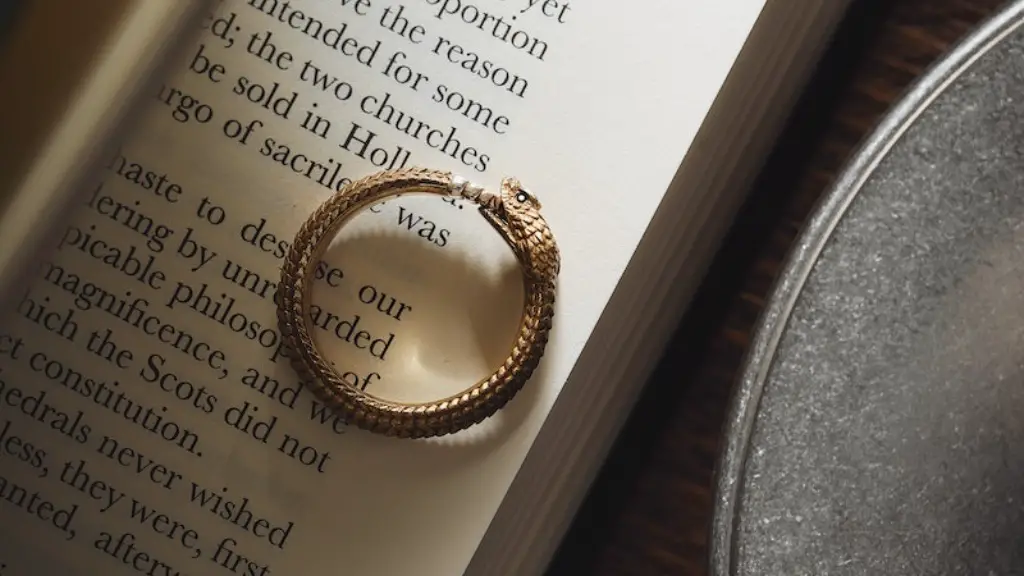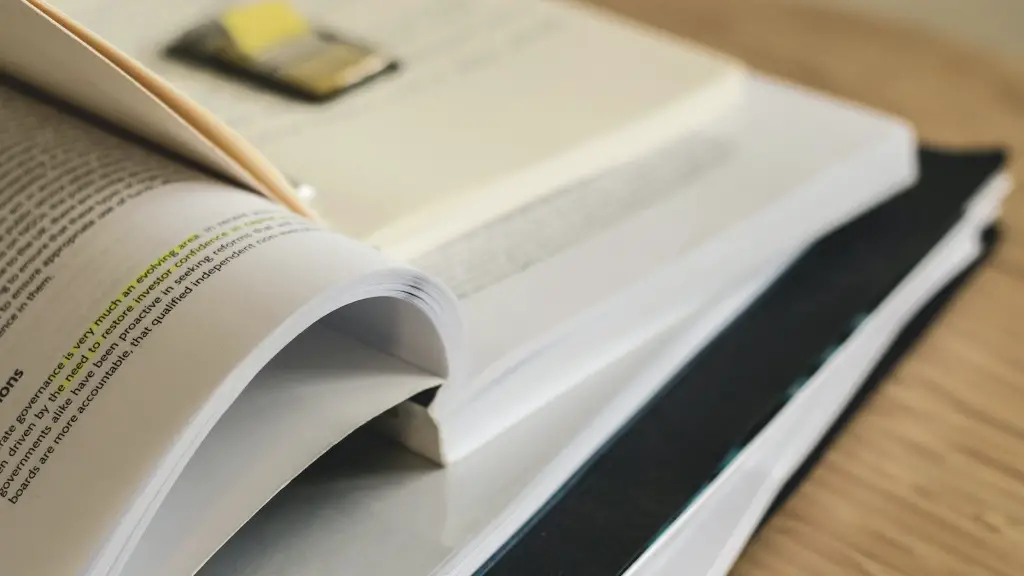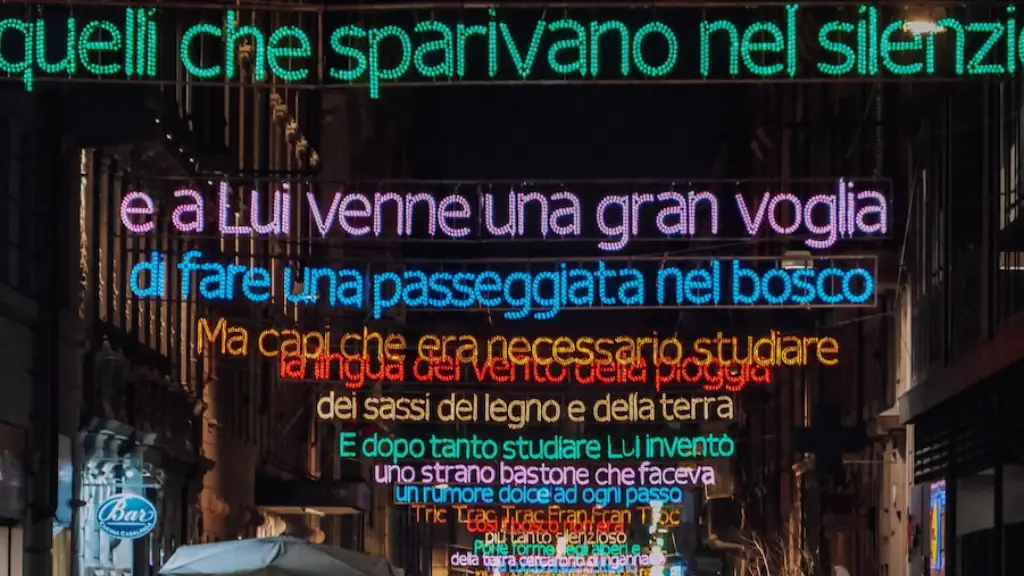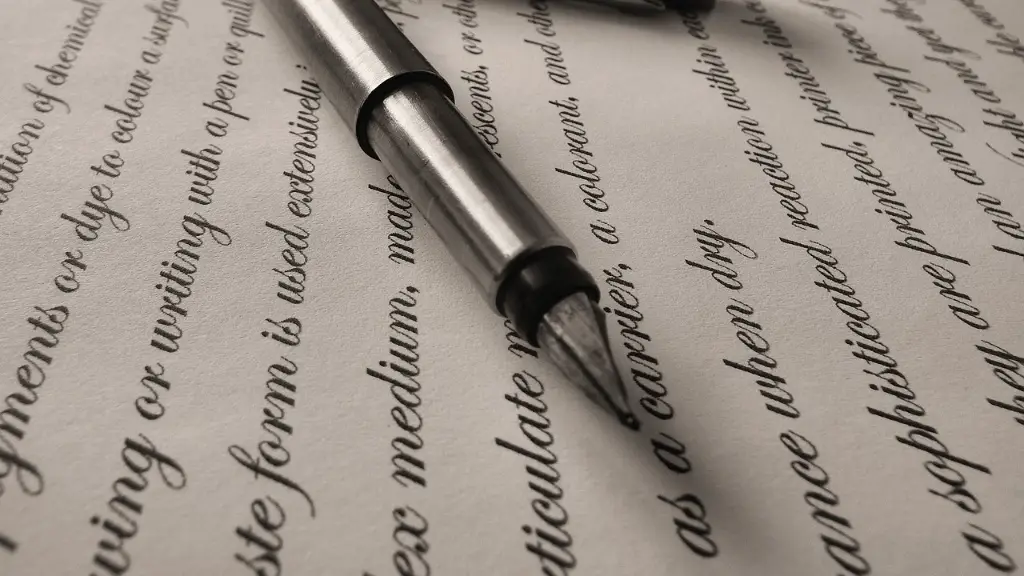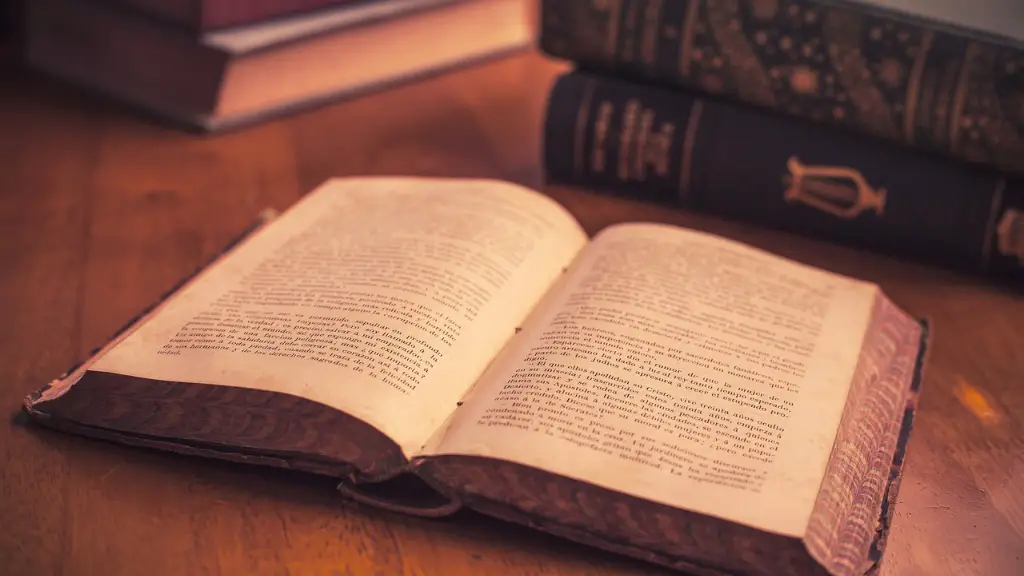Reflective poetry is a form of art which gives the poet an opportunity to be introspective and delve into their inner depths. It often involves a writing process which involves a deep reflection on one’s thoughts, feelings and emotions in order to further explore self-awareness, consciousness and understanding. Reflective poetry often has an autobiographical element to it and tends to take the form of a personal journey. It is an intimate experience of the poet’s inner world.
The poet’s intuition and inner guidance are often key elements in reflective poetry. By expressing themselves in this way, the poet enables something special and powerful to occur. This allows for a deep personal exploration and insight into one’s own life and identity. Through it, one may gain insight into the patterns of their life, gaining clarity and understanding about the events and decisions which have shaped their current existence.
In reflective poetry, the poet often uses their imagination and memory to craft images and metaphors from the depths of their personal reflection. By looking deeply into their own experiences, the poet can create a poetic narrative which is both meaningful and emotionally powerful. Reflective poetry can offer insight into the experiences of others, while also helping to uncover the often chaotic realm of human emotions.
By expressing their ideas and emotions through words, the poet is often able to release built up tension, free themselves from inner limitations and find peace and solace within their own words. Reflective poetry is often a tool for liberation, allowing the poet to gain clarity, insight and understanding around the topics that they are reflecting on. This can lead to a transformative experience, where the poet is forever changed by the process.
In terms of structure, reflective poems can take on almost any form. A few common techniques include rhyme, meter, alliteration, internal rhyme, similes, analogies and metaphors. However, it is important for the poet to find the most suitable structure for their ideas and emotions in order to best express them. For example, a reflective poem may take on a more formal structure, such as a sonnet, or a looser, more conversational one such as a series of free verse stanzas.
Narrative
Narrative poetry is a particular type of reflective poetry as it often tells a story. Through a combination of poetic devices, the poet can create a narrative which employs a strong sense of emotion and imagery. This can be used to describe any subject matter, such as the poet’s own life, a current political issue, or a significant event. By constructing a narrative poem, the poet can explore certain topics in greater depth while releasing the emotions they hold within them.
Narrative poetry can also be used to discuss a single event or moment in time and tell an entire story. From one short poem, the poet can share a moment of joy, sorrow, happiness, or pain. By immersing the reader in the moment and expressing their powerful emotions, the poet can help to draw out powerful connections from the reader.
Like all forms of reflective poetry, narrative poetry places the author in a vulnerable position. By constructing a story that reflects upon an aspect of their own lives, the poet may be putting themselves in a state of emotional exposure. It can also be a therapeutic and healing process, as the poet may discover something new about themselves through the narrative they have created.
Rhythm and Sound
Rhythm and sound are poetic devices which can be used in reflective poetry to create movement and form. These elements have long been a part of the poet’s craft and can add an extra layer of depth to a poem. By adding spice to their words, the poet can create a soundscape which leads the reader through the poem and helps to strengthen the themes that are being explored.
Using rhythm and sound in reflective poetry is about finding the right balance and combination for the poet to express themselves. Alliteration and internal rhyme can be used to create a musical quality, while the combination of syllables, words and phrases create a unique beat and flow. The combination of harmonious elements can create an atmosphere which completely immerses the reader in the poem and further intensifies their emotional connection.
In terms of structure, the poet should strive to find a rhythm that reflects the themes of their poem. By finding the right combination of words, syllables and sounds, the poet is able to strengthen their poem and create a more powerful effect. Through this process, the poet can find more clarity and understanding while also helping to ensure that their poem is as emotionally resonant as possible.
Metaphor
Metaphor is a powerful poetic device which is often used in reflective poetry to explore the complexity of the human experience. A metaphor is a figure of speech which compares two unlike things in order to explain something. By using this technique, the poet can express ideas which are hard to articulate by using comparisons and providing an alternative form of understanding.
In reflective poetry, the poet often uses metaphors to illustrate a concept, emotion or experience in a deeper way. By comparing something to an abstract concept, emotion or experience, the poet can express something in a creative and unique way. This has the potential to strengthen the poem further, while providing the reader with a deeper insight into the poet’s thoughts and feelings.
Metaphors can also provide the reader with a visual representation of the concept or experience which can heighten the emotional impact of the poem. Strong metaphors can be powerful tools in reflective poetry and can often be used to delve deeper into the human condition. The poet should strive to find a unique and creative comparison which accurately reflects the concept, emotion or experience they are trying to communicate.
Form
Form is an important part of reflective poetry as it determines the overall structure of the poem. By finding the most suitable form which reflects the themes, ideas and emotions within the poem, the poet can create a powerful and emotionally resonant piece. There are a variety of poetic forms which can be used, including sonnets, villanelles, pantoums, ghazals and free verse.
Each form places its own restrictions on the poet, allowing for different techniques and methods to be used. However, the poet should strive to find a form which best reflects their unique style and offers them the most creative freedom. For example, some forms may restrict the use of certain techniques, while others may offer more opportunities. The poet should also look beyond traditional forms and explore their own creative boundaries.
In addition to exploring different forms, the poet should also pay attention to the meter and overall rhythm of their poem. The use of poetic devices such as alliteration, rhyme and onomatopoeia can be used to create a more influential and engaging poem. By finding the most suitable form and rhythm, the poet can create a poem which is both powerful and meaningful.
Symbolism
Symbolism is an important part of reflective poetry as it allows the poet to express emotions or ideas in a more abstract way. By using symbols, the poet can create images which have multiple meanings and interpretations. Through symbolic language, the poet can express ideas and emotions that may be difficult or uncomfortable to talk about directly.
Symbolic language can also be used to illustrate abstract concepts such as faith, love, hope and courage. By using symbols, the poet can bypass the limitations of language and draw out powerful emotions from the reader. Symbols can be powerful tools in reflective poetry as they often evoke a deep emotional connection within the reader.
In terms of structure, symbolic language can be used to help create a more streamlined and poetic flow throughout the poem. The poet should strive to create a form which allows their symbolic language to be effectively incorporated and resonates with the reader. Symbolism can be an effective way to help reduce the complexity of a poem and add an extra layer of depth.
Imagery
Imagery is another powerful poetic device which is often used in reflective poetry to create vivid and emotive descriptions. Through imagery, the poet can construct a vivid and evocative story which transports the reader into another world. By utilizing the senses, the poet can strengthen the overall impact of the poem.
The use of imagery in reflective poetry can be a way of conveying a deeper and more complex message. By finding creative metaphors, comparisons and images, the poet can help the reader gain a greater understanding of the emotions and ideas being discussed. It is important for the poet to take the time to seek out the perfect imagery which accurately reflects their ideas and emotions.
In terms of structure, imagery can be used to link different sections of a poem together. By using powerful visuals and descriptions, the poet can create a more effective narrative arc. Imagery should be used in conjunction with other poetic techniques to create a poem which is both powerful and emotive.
Vocabulary
The language used in reflective poetry is an important part of the poetic form. By choosing themes which accurately reflect the poem’s content and purpose, the poet can create a powerful and emotive poem. The use of precise language and vivid descriptions can also be a way of conveying a more complex message.
In terms of structure, it is important for the poet to find a suitable style which reflects their ideas and emotions accurately. The poet should explore more creative ways of expressing themselves and take the time to create innovative and imaginative vocabulary. The use of creative language can help to create a unique and powerful poem which is both meaningful and emotive.
The language used in reflective poetry should be dynamic and evocative. By using powerful and emotive language, the poet can convey a vivid picture which resonates with the reader. By combining precise language with devices such as metaphor, symbolism and imagery, the poet can create a poem which is powerful and emotive.
